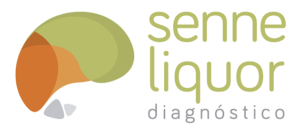Tema
Acurácia das bandas oligoclonais
Introduction
Assessing intrathecal immunoproduction is very important in the diagnosis of neuroinflammatory diseases such as multiple sclerosis. Quantitative and qualitative parameters are used to evaluate intrathecal immunoproduction. The presence of oligoclonal bands in considered the most sensitive parameter of intrathecal immunoproduction.
The aim of this study was to compare the sensitivity of different methods of intrathecal immunoproduction assessment.
Methods
We evaluated CSF samples sent to “Senne Liquor Diagnostico” for intrathecal immune production analysis. CSF samples with type 2 and type 3 oligoclonal bands patterns, as determined by isoeletric focusing, were considered positive (BOC+). The remaining CSFs were considered BOC-.
ROC curve and area under the curve analyses with gamma globulin, CSF IgG, serum IgG, IgG index, and Reiber nomogram were carried out to evaluate sensitivity to identify BOC+.
Results
We included 2599 BOC+ samples and 6387 BOC- samples. All the tested parameters showed statistically significant correlation with BOC+ (P<0.0001). The areas under the curve found were:
IgG index (AUC=0.856),
Reiber nomogram (AUC=0.848)
CSF IgG (AUC=0.770)
Gamma-globulin (AUC=0.684)
Serum IgG (AUC=0.551).
The sensitivities and specificities are shown in Table 1
Conclusion
IgG index was the CSF parameter with greater sensitivity for BOC+. With the cut-off of 0.7, which is the usual one, there were good IgG index sensitivity and specificity values for BOC+.



